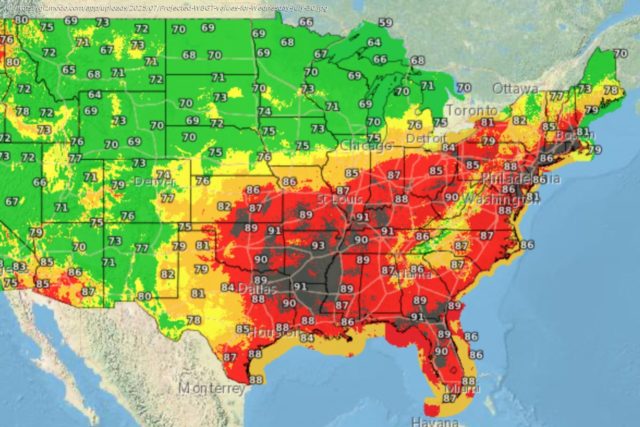That’s bad news for human health.
An oppressive heat dome has gripped the eastern U.S. this week, prompting the National Weather Service (NWS) to issue heat warnings for nearly 170 million Americans. To make matters worse, severe humidity is making high temperatures feel even hotter.
Extreme heat and humidity make for a deadly combination. The human body lowers its temperature by sweating, and when sweat evaporates, it cools the surface of the skin. Humidity slows this process down, increasing the risk of heat-related illness. To extrapolate the combined physiological impact of heat and humidity, meteorologists look at the wet-bulb temperature. This measurement essentially represents the amount of heat stress the body experiences under hot, humid conditions. It’s also a critical metric for understanding human survivability in a changing climate.
“The wet-bulb temperature is literally the temperature of a wet thermometer’s bulb, traditionally measured by putting a tiny wet sock on the end of a thermometer,” David Romps, a professor of Earth and planetary science at the University of California-Berkeley, told Gizmodo in an email. Similar to a sweating person, the wet-bulb thermometer cools itself by evaporating water, “but a wet-bulb thermometer is not like a person in some important ways,” he explained.
Humans generate body heat, which must dissipate into the air. “Therefore, all else equal, a sweaty person will be warmer than a wet bulb,” Romps said. When the wet-bulb temperature approaches 98.6 degrees Fahrenheit (37 degrees Celsius)—the average human body temperature—it’s extremely difficult to maintain a safe internal temperature.






